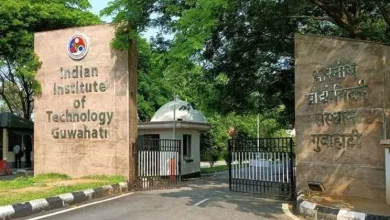
HPV vaccination has had a profound impact on cervical cancer prevention and control. (Photo: Pixabay)
Cervical cancer is a significant global health issue, affecting millions of women worldwide. Human papillomavirus (HPV) infection is a major risk factor for the development of cervical cancer. Fortunately, the introduction of HPV vaccines has revolutionized cervical cancer prevention and control strategies. HPV is a common sexually transmitted infection, with more than 100 different types identified. Certain high-risk types, such as HPV-16 and HPV-18, are responsible for approximately 70% of all cervical cancer cases. Persistent infection with these high-risk HPV types can lead to the development of precancerous lesions, which, if left untreated, may progress to invasive cervical cancer over time.
The Role of HPV Vaccines:
HPV vaccines are designed to prevent infection with high-risk HPV types, thereby reducing the risk of cervical cancer. Currently, there are three HPV vaccines available: Gardasil, Gardasil 9, and Cervarix. These vaccines target various HPV types, including those responsible for most cases of cervical cancer. They work by stimulating the immune system to produce antibodies that neutralize the virus, preventing its entry into cells and subsequent infection.
Impact on Cervical Cancer Incidence:
Since the introduction of HPV vaccination programs in many countries, significant reductions in HPV infection rates and cervical cancer incidence have been observed. Studies have shown that vaccinated populations have lower rates of HPV infection and precancerous lesions compared to unvaccinated populations. One of the remarkable advantages of HPV vaccination is the potential for herd immunity. By vaccinating a significant portion of the population, the transmission of HPV can be significantly reduced, protecting both vaccinated and unvaccinated individuals. This population-level effect has been demonstrated in numerous studies, highlighting the importance of high vaccination coverage to achieve maximum benefits in terms of cervical cancer prevention.
Impact on Cervical Cancer Screening:
HPV vaccination complements existing cervical cancer screening programs. While vaccination reduces the overall burden of HPV infection and related diseases, it does not eliminate the risk entirely. Therefore, regular cervical cancer screening, such as Pap smears or HPV testing, remains essential, even for vaccinated individuals. However, vaccinated individuals may benefit from reduced screening frequency or modified screening algorithms, as the risk of developing precancerous lesions is significantly lower.
What if you don’t belong to the recommended vaccine age group?
HPV vaccine is administered in a 2-dose schedule for ages 9-14 and 3 dose schedule for those over 15years with catch up age up to 26 years. But nevertheless, it is approved for usage even up to age 45 years with definitely some benefit irrespective of being sexually active or not. For those who do not belong to the recommended age group, there are still several important steps they can take to protect themselves from the disease.
Regular Pap tests/screenings: Pap tests, also known as Pap smears, are essential for detecting cervical cell changes and early signs of cancer. Regular screenings can help identify any abnormalities early on, allowing for timely intervention and treatment. HPV testing is typically done in conjunction with Pap tests; however, it can be done as a standalone test in certain cases. HPV testing can identify the presence of high-risk HPV strains that are linked to cervical cancer, even before any abnormal cells are detected.
Safe sexual practices: Practicing safe sex, including consistent condom use, can reduce the risk of HPV transmission. While condoms provide some protection, they may not cover all potentially infected areas. Therefore, it’s important to note that HPV can still be transmitted through areas not covered by condoms. Limiting sexual partners and choosing partners who have had fewer sexual partners can also reduce the risk of exposure to HPV.
Education and awareness: Staying informed about cervical cancer, its risk factors, and the importance of regular screenings is crucial. Educate yourself about the signs and symptoms of cervical cancer and seek medical attention promptly if you notice any unusual changes, such as abnormal vaginal bleeding, pelvic pain, or unusual discharge.
Lifestyle choices: Maintaining a healthy lifestyle can contribute to overall well-being and potentially reduce the risk of cervical cancer. This includes regular exercise, a balanced diet rich in fruits and vegetables, avoiding tobacco products, and limiting alcohol consumption.
HPV vaccination has had a profound impact on cervical cancer prevention and control. It has demonstrated efficacy in reducing HPV infections, precancerous lesions, and cervical cancer incidence. Combined with effective cervical cancer screening, HPV vaccination offers a comprehensive approach to reducing the burden of this disease globally. Continued efforts to improve vaccine accessibility, increase awareness, and ensure high vaccination coverage are essential for maximizing the benefits of HPV vaccination and achieving significant progress in cervical cancer prevention and control.
The article is authored by Dr. Vishal Kulkarni (Consultant Medical Oncologist, Hemato-Oncologist and Transplant Physician), HCG NMR, Hubli.







